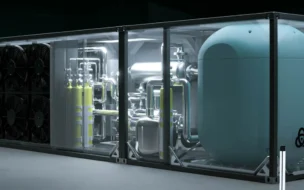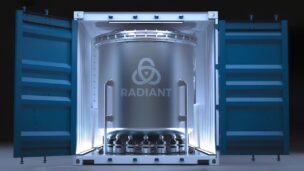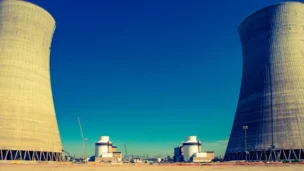The hyperscalers are living up to their name, and scaling that fast comes with a growing hunger for power. In this case, we mean nuclear power.
Yesterday, Google announced a strategic agreement with Elementl Power, a nuclear project development company, to advance site development for three nuclear projects.
- Google is committing an undisclosed amount of capital to back these projects.
- Each project would provide a minimum of 600 MW of capacity, with the option for commercial offtake (meaning Google could buy that power when the plants are up and running).
- Elementl and Google haven’t picked sites for the three projects, but that work is ongoing.
“Google is committed to catalyzing projects that strengthen the power grids where we operate, and advanced nuclear technology provides reliable, baseload, 24/7 energy,” Amanda Peterson Corio, global head of data center energy at Google, said in a release.
Giant steps: Google’s power needs are growing in tandem with the AI boom. The company is supporting nuclear power development in the hopes that the always-on, baseload energy source will fill its energy needs.
In October 2024, Google announced its first nuclear power partnership: a deal with Kairos Power that would have the SMR company provide ~500 MW of capacity somewhere in the US. The companies haven’t disclosed whether those reactors will be in one or several locations, but they will be near Google data centers.
Google’s agreements with Kairos Power and Elementl Power bring its nuclear power development commitments to at least 2.3 GW.
Picking the approach: Elementl Power isn’t an SMR or traditional nuclear reactor company. It’s a project developer, founded to “solve a critical industry need and serve as a catalyst for private capital formation in advanced nuclear projects,” says Ryan Mills, the company’s cofounder and president.
Instead of committing to specific reactor types or quantities up front, Elementl will weigh its options, select the approach most likely to meet its goals, and finance the project—a structure similar to how non-nuclear power plants are built.
- This means that Elementl will pick a partner to build the reactors rather than construct them itself.
Elementl aims to bring 10 GW of nuclear capacity online by 2035. The 1.8 GW minimum it’s building with Google is a significant step toward that goal—though the companies did not specify a timeline for the projects.
Lead Reporter of Ignition





